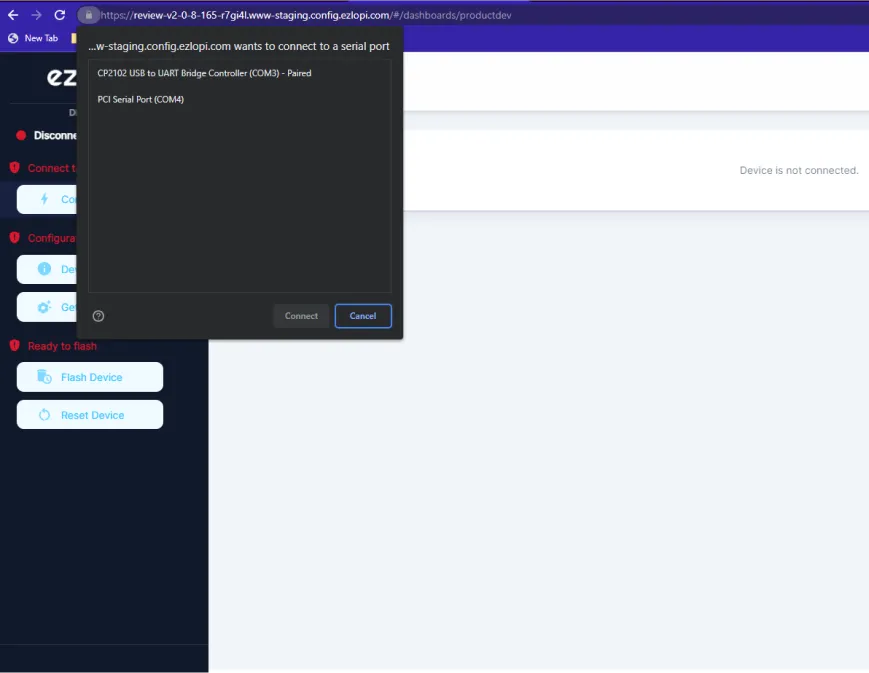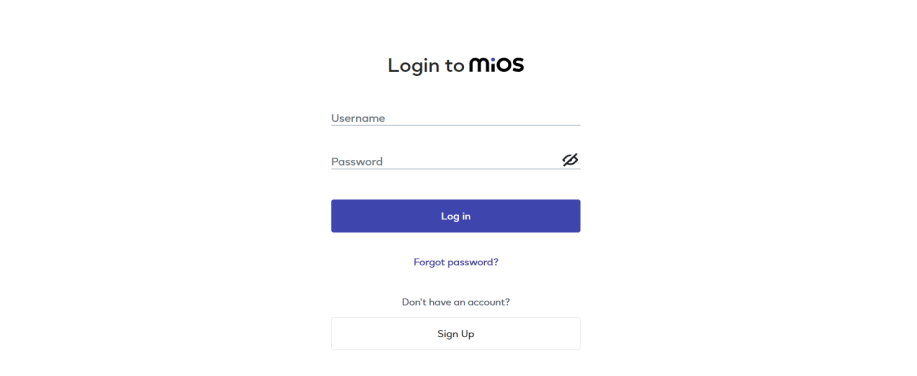
LED integration using WEMOS D1 R32 smart device
LED Control using ESP32 WEMOS D1 R32
The EzloPi smart devices provide automation through simple, customizable use with our open-source EzloPi platform, making daily life easier and improving human-machine interactions.
Before moving into this example, it is very important to know about the device registration, provisioning and converting the ESP32 device into an EzloPi device along with knowledge of Web Flasher, MiOS Mobile Application for Android/iOS and the MiOS Web Application.
1. About this example
The ESP32 is an incredibly versatile and powerful microcontroller with built-in Wi-Fi and Bluetooth capabilities that can be seamlessly integrated with various compatible boards and components, expanding its capabilities and applications, making it an excellent choice in the world of electronics and IoT. There are many development boards based on the ESP32 MCU available on the market today in the same form factors as Arduino and Raspberry Pi boards, which can be used as replacements for the Arduino and Raspberry Pi’s and provide the capabilities to convert your hardware (projects or devices/sensors) into IoT capable smart devices.
This project demonstrates the versatility of the EzloPi platform as we interface an LED with the ESP32-based WEMOS D1 R32, which is used as a EzloPi smart device. The project aims to create a simple IoT device by interfacing an LED with the WEMOS D1 R32 and integrating it into the EzloPi ecosystem. This project will enable users to control the LED remotely through the MiOS applications, providing a foundation for more complex IoT applications.
2. Circuit Diagram & Interface
The following components are required for interfacing with the EzloPi device:
- ESP32 WEMOS D1 R32 as an EzloPi smart device.
- LED (1.8V to 3.3V DC)
- Resistor of 120 ohm.
The wiring diagram of ESP32 WEMOS D1 R32 32 pin is represented as follows:


The following connections are made in order to complete the entire circuit setup.
From ESP32 WEMOS D1 R32 (30 pins) to the LED:
- Connect the GND from the ESP32 WEMOS D1 R32 to the cathode (shorter leg) of the LED.
- Connect the I02 pin from the ESP32 to the pin of the resistor and the second pin of the resistor connects with the positive terminal (anode) and long leg of the LED.
3. Interfacing the LED to the ESP32 WEMOS D1 R32 with EzloPi Web Flasher
1. Set up your device/hardware by visiting config.ezlopi.com

- Log in using the credentials which you just set earlier while signing up.

- Now, click on the Connect Device button and a pop-up window will appear.

Now, select COM Port to which your ESP32 device is connected. In our case, the COM3 port is used.
Click Connect.

- If you are new to this and it's your first time configuring, select Create new Device ID. Enter Wifi SSID and Wifi Password.
- In the Device Configuration, tab click on Digital Output.

- An Digital Output window will open for inputting the following parameters:
- Set a Device Name of your choosing. In our case, we set it to Ezlo Wemos LED.
- Set Device Subtype to LED.
- Set the IN GPIO to 2.
- Now Click the Apply button.
- After clicking the apply button you can see a table of your setting in the device configuration tab.
- Press the Flash Device button.
- A window will appear on the bottom right side of the screen displaying “Please press BOOT button while flashing begins.”

- Hold the BOOT button down until the next window appears on the bottom right side of the screen which says “Installation prepared. Please release the boot button now.”

- Release the BOOT button from your ESP32 when this pop-up on the bottom right window appears.

- After some time, a popup will appear saying Device Flashed Successfully! This means that your device has been set up successfully.
4. MiOS App
You can download the MIOS Android app from the Google Play Store and Apple App Store.
- After downloading the app, proceed to install the application and open it.

- Using the MIOS mobile application, create a new Ezlo Cloud account using the sign-up option. If you already have an account, you may proceed to log in.

- After successfully logging in, you will be able to see the number of controllers connected such as a lamp, fan, or any other device in the MiOS app. Tap on any controller of your desired ID:

- You will be able to see the status of your controller whether it is online or offline. Access the device dashboard, and tap the device. The following view of the dashboard will appear:

- After opening the MiOS mobile dashboard, you will be able to see the tile of your connected device. The LED can be controlled remotely with the MiOS app after it is successfully interfaced with the WEMOS D1 R32 as our EzloPi smart device.
5. MiOS Web Application
- After configuring the controller with the EzloPi web flasher, head to ezlogic.mios.com

- Use the same credentials to log in that you used for configuring the controller with the web flasher.

- After opening the MiOS web dashboard, you will be able to see the tile of your connected device. The LED can be controlled remotely with the MiOS app after it is successfully interfaced with the WEMOS D1 R32 as our EzloPi smart device.

eZlopie Products A single-channel 5V relay module $00.00

eZlopie Products Momentary switch $00.00

eZlopie Products Level Shifter Module (BSS138) $00.00

eZlopie Products ESP32
$00.00

eZlopie Products AC Lamp and Holder
$00.00











